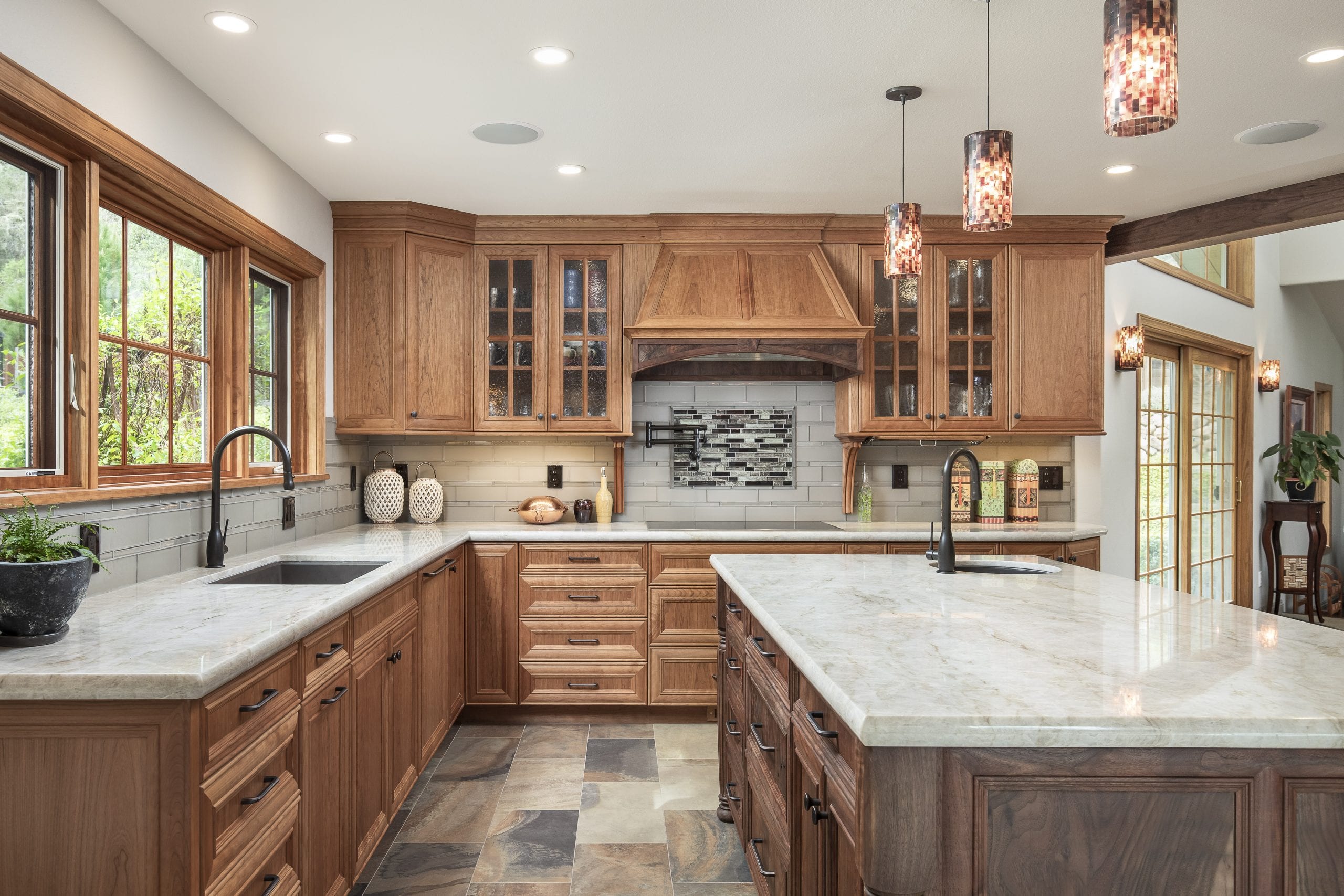Embarking on a home remodeling project is an exciting endeavor, but it's also a significant investment. During the early stages of the remodeling process, when you are meeting/interviewing potential contractors, spend some time discussing how they handle contracts. The type of contracts they offer can significantly impact the budget, timeline, and overall experience. Three of the most common approaches are fixed-price, time-and-materials, and cost-plus contracts. Understanding the differences between these can save you headaches and ensure a smoother project.
What is a Fixed-Price Contract?:
A fixed-price contract, also frequently referred to as a "lump-sum contract," operates on the principle of a predetermined, static cost for the entirety of the project. This singular, all-encompassing price is calculated by the contractor and is based on a comprehensive scope of work that outlines every aspect of the remodeling project. This scope of work serves as the foundation for the contract, detailing the specific materials to be used, the labor required, and the expected deliverables. In essence, the homeowner agrees to pay a single, fixed sum for the project's completion, regardless of the actual costs incurred by the contractor. As an expert in the home remodeling industry, Lewis Design Build Remodel (LDBR) only deals with lump-sum contracts.
What is a Time-And-Materials Contract?:
Conversely, a time-and-materials contract adopts a more fluid approach to a remodeling project. In this option, the homeowner compensates the contractor for the time expended by their labor and the precise cost of the materials utilized at a pre-determined rate. The contractor typically establishes this hourly rate for their labor, materials are billed at their actual cost (often with a predetermined markup to cover handling and procurement), and the contractor’s profit is already included in these hourly/material rates. This contract type is inherently more flexible, allowing for adjustments and changes during the project's progression, but it also introduces a degree of cost uncertainty, as the final expenditure is contingent on the project's duration and the materials consumed. It is also important to note that certain states or regions do not legally accept time-and-materials contracts, such as California.
What is a Cost-Plus Contract?
The final contact type we will discuss is a cost-plus contract. Similar to a time-and-materials contract, the contractor is reimbursed for their actual costs, but it differs in how profit is handled. Unlike in a time-and-materials contract, where profit is built into the hourly labor rates or material markups, in a cost-plus contract, a separate fee (either a fixed amount or a percentage of the project's total cost) is added to the actual costs to cover the contractor's profit.
Key Differences:
Risk:
- Fixed-Price: The contractor assumes the majority of the risk. If costs exceed their estimates, they absorb the difference. This provides the homeowner with cost certainty.
- Time-and-Materials: The homeowner assumes more risk. Unexpected issues or delays can lead to increased costs.
- Cost-Plus: Homeowners also bear more risk with this contract type since they are responsible for paying all project costs. Risk can be minimized, though, by opting for a guaranteed maximum price (GMP).
Finished Product:
- Fixed-Price: The finished product is defined in detail before the project starts. Changes to the scope can be costly.
- Time-and-Materials: There may be more flexibility to make changes as the project progresses, but this can affect the project outcome and total cost.
- Cost-Plus: Although this contract type can have less consistent timelines and budgets, the added flexibility will ensure an end result that meets the homeowner's expectations.
Project Timeline:
- Fixed-Price: Contractors are often incentivized to complete projects within a set timeframe.
- Time-and-Materials: The timeline can be less predictable, as unexpected delays or changes can extend the project.
- Cost-Plus: Project timelines are less predictable with cost-plus contracts as well for the same reasons listing for time-and-materials.
Bid Comparisons:
- Fixed-Price: Comparing bids is relatively straightforward since you will compare total project costs.
- Time-and-Materials: Comparing bids can be more complex, as you are comparing hourly rates and material markups.
- Cost-Plus: Just like a time-and-materials contract, you will need to compare hourly/materials rates, as well as discuss the separate fee to represent the contractor’s profit before adding it to the actual costs.
Maintenance/Management:
- Fixed-Price: Requires less day-to-day management from the homeowner, as the contractor is responsible for staying within budget.
- Time-and-Materials: May require more active management to monitor costs and ensure efficiency.
- Cost-Plus: Day-to-day management of this contract type will also require more attention due to the contract’s dynamic nature.
Flexibility:
- Fixed-Price: Less flexible. Changes to the scope of work can lead to change orders, which increase the total cost.
- Time-and-Materials: Offers more flexibility to make adjustments during the project.
- Cost-Plus: Similar to time-and-materials, cost-plus contracts are more flexible and allow changes during the project.
Budget/Cost Differences:
- Fixed-Price: Provides budget certainty. You know the total cost upfront.
- Time-and-Materials: Can be less predictable. If the project takes longer than expected or unexpected issues arise, costs can escalate.
- Cost-Plus: As stated earlier, time-and-materials contracts and cost-plus contracts are very similar, but differ when it comes to how profit is handled.
When to Use Which?
Fixed-Price:
- Best for projects with a well-defined scope of work.
- Ideal when budget certainty is a top priority.
- Good for projects where the homeowner wants minimal involvement in day-to-day management.
Time-and-Materials/Cost-Plus:
- Suitable for projects with an uncertain scope or that may require flexibility.
- These may be preferable for smaller projects or those where the homeowner wants more control.
- These options can be useful when there is a high likelihood of unknown conditions being discovered.
- Also good when the project scope is not fully defined upfront.

Regardless of whether you opt for a fixed-price or cost-plus contract, securing a detailed written agreement is essential. This contract should clearly specify every task to be performed, the exact materials required, the labor involved, and a comprehensive breakdown of payment terms. Furthermore, it is imperative to engage only licensed and insured contractors who possess a demonstrable history of successful project completion and positive client testimonials, like Lewis Design Build Remodel (LDBR). Finally, consistent and transparent communication between the homeowner and the contractor is paramount throughout the entire remodeling process. This open dialogue ensures that expectations are aligned, potential issues are addressed promptly, and the project progresses smoothly toward its desired outcome.
For more information, please visit our website and download our eBook: ‘A Guide To Hiring A Remodeler.’ Our eBook Guide provides additional resources and includes helpful Worksheets that will make the process of Picking the Right Remodeling Expert For the Job stress-free. To get your own project started, get in touch with us or give us a call at (831) 566-9499.




